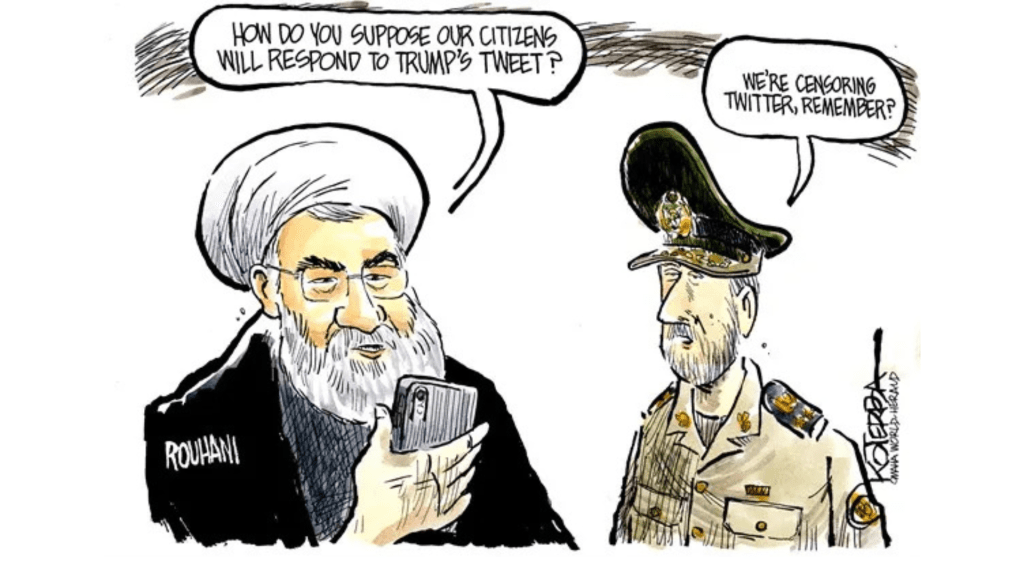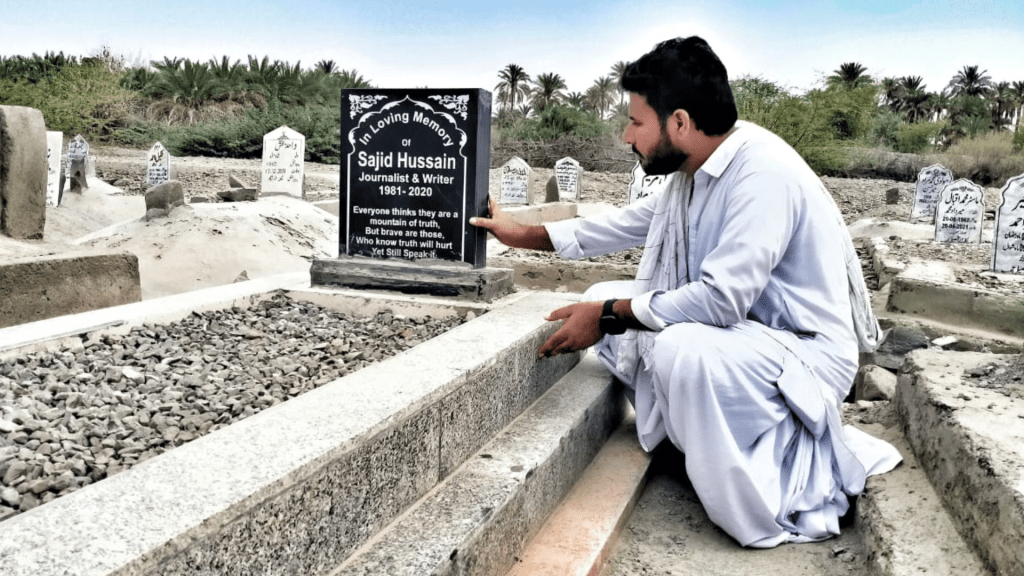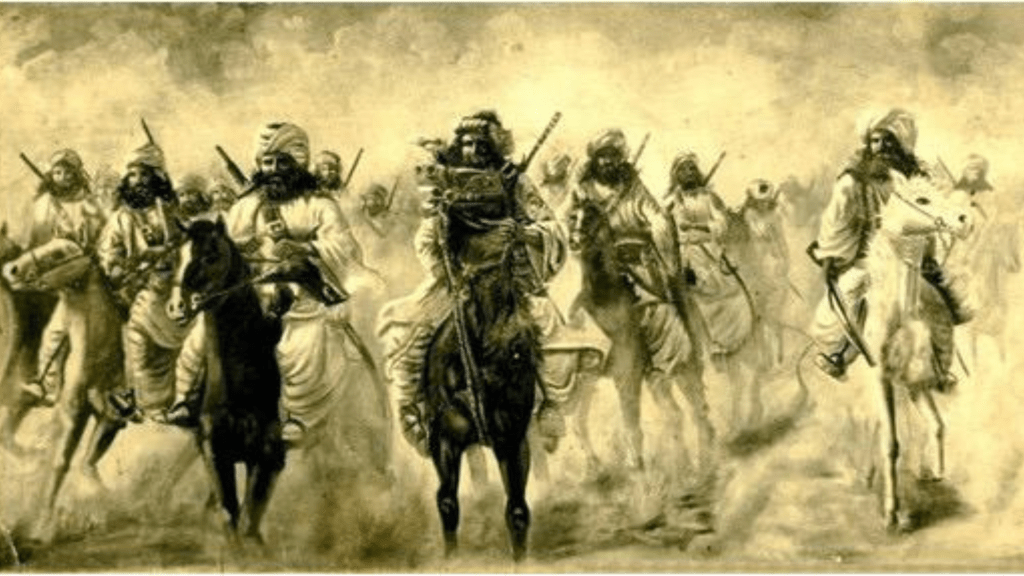Residents of Gwadar recently blocked the Makkoran coastal highway in protest. They were not asking for much. They just wanted water, electricity and a right to go to the sea — their own sea.
But wait, were we not told in the early 2000s that in the then-near future Gwadar would become, depending on the mood of those saying it, Singapore or Dubai or any other prosperous coastal city in the world? A certain generation might still remember the fancy sketches that showed the small fishing town transformed into a city grand in scale and feeding the entire region let alone its modest fishermen. But then things changed, or they didn’t. Anyway, here is what happened.
The Hype
The China-Pakistan Economic Corridor (CPEC), a so-called landmark project of estimated USD 62 billion as part of China’s One Belt One Road initiative, was announced in early 2015 but China’s interest in the deep waters of Balochistan dates back to the 1960s which was revived with the construction of a deep seaport in Gwadar in the early 2000s. At the time of its announcement, CPEC was projected and publicised as a game-changer that was supposed to not only boost the struggling Pakistani economy but also dramatically alleviate the sense of deprivation of the people of Balochistan, especially those living in and around Gwadar. Officials showed us how the small, sleepy fishing town would transform into a Pakistani version of Dubai or Singapore; fancy sketches of beautiful beaches, ten-lane highways and extravagant high-rises revealed its future would be the envy of the world. Even Vsh News, the only Balochi satellite news channel in Pakistan, ran advertisements of the Gwadar Gymkhana project, owned by the channel’s owner, showcasing the city’s only luxurious venue for recreational facilities. (Ironically, the same ad has been running recently during news breaks broadcasting local people rallying for basic facilities such as water and electricity.)
In the media limelight, the local people started calling Gwadar “CPEC ke maaty ka jhumar” (The jewel in the crown of CPEC), and started chanting slogans like “CPEC ke jhumar ko pani do” (Give the jewel of CPEC water and electricity) in their protest rallies, as if without CPEC they don’t deserve water and electricity.
Besides the political rhetoric, media publicity and simplicity of the local people, doesn’t it make economic and financial sense if the government spent a few hundred million (1% of the 62 billion USD) for the basic social and economic structure of the city, the so-called jhumar?
The Honeymoon
The early signs of the honeymoon period of the Gwadar project started to appear when the media hype and political rhetoric triggered a real estate boom in the city and its adjoining areas. In the early 2000s, when China started construction of the deep seaport, the prices of the previously-barren land skyrocketed almost overnight. Political & business class elites, high-ranking officials in government and security agencies started the land grabbing tactics to take maximum benefit out of this real estate bubble. Apart from buying land, anyone with power and money wanted to ensure he had a stake in the then soon-to-be-developed city — everyone wanted a piece of the cake, the jostling over the contracts in the development projects was quite a sight. Hashoo Group, the owner of the PC Hotel in Gwadar, and a well-known local leader of the National Party, Gwadar, leveraged their ownership of the land and secured loans from different banks. This boom was further fuelled by the money laundering opportunities in real estate deals. Land grabbing and fraudulent sales became very common. Even the properties owned by residents were not safe let alone that of an investor from other parts of Pakistan. Real Estate became the only business if someone wanted to become a millionaire overnight. The stretch of road which is currently called the ‘marine drive’ had only offices of the real estate agents. Real estate was the talk of the town and there was nothing else to discuss during this first honeymoon period. The CPEC project, announced in 2015 with another property boom in 2016-17, was a sequel to that early 2000s period.
The locals also got some benefit from the skyrocketing prices, as they were lured to sell their properties before anyone arrogated it fraudulently. Parliamentary nationalist parties used the land as a tool to secure votes. It was a mystery from where these parties got hold of the land and distributed it among their voters. Interestingly, in most cases, there was no land at all, just bank receipts after depositing small amounts for future housing schemes. Those receipts at times sold for 10 times their market value. In that sense, it was a honeymoon period for everyone.
However, the masses only got a one-time benefit and spent that little fortune on basic needs like adding a small room in their house, making marriage arrangements and or taking care of their health issues. Nationalists from other parts of Balochistan criticized residents for having sold their land. Yes, the people of Gwadar did, and any rational person would have taken the same decision in the wake of the price hikes and real estate frauds. But the poor locals got only a tiny fraction of the benefit from this honeymoon period. The real beneficiaries were the political elite and the government agencies whose thirst for the land has not been satisfied even today.
The Reality
The first reality check of the mega-project came across when the so-called master plan of Gwadar deep seaport was revealed and somehow got public in 2006. In the master plan, there was absolutely no arrangement to accommodate the existing population, especially the fishermen, which accounted for around 80% of the local population. The hype was based on the deep seaport constructions and later on CPEC investment amount of USD 62 billion and a list of megaprojects.
CPEC: A Game Changer or a Disaster, was my first piece to analyse the impact of CPEC on the livelihood of the locals. The article, published in 2017, projected and concluded that the local fishermen would be the net loser of this project. The presumption in traditional economic development theories is that with huge investment in mega projects like CPEC, the economic benefits will trickle down to the masses and their life will improve in terms of employment and other opportunities. This traditional theory has proved to be wrong and the current definition of economic development is linked to the socio-economic wellbeing of the masses rather than the investment in megaprojects.
A simple example would clarify this point in the context of Gwadar. Gwadar is the only district in Pakistan where there are four airports and have been operational since the 70s or even earlier. Ironically Jimmodi (renamed Jiwani now) has an airport too, even though the distance between Gwadar city and Jiwani is around 70 km. Knowing the fact that 90% of the local people could not afford the airfare, and the airports were used by an elite class, government and security agencies officials only. Investing in and developing four airports doesn’t make any sense in the perspective of real economic development. Now imagine how a megaproject like the new airport of Gwadar, boasted to be the second largest in Asia, will bring about any improvement in the life of the poor.
Moreover, the trickle-down benefits of any mega project will reach the masses only if effective planning and concrete actions are taken to uplift the fisheries sector, the only source of their livelihood. No steps were taken to integrate the locals in terms of enhancing their technical and vocational skills. The focus and priorities have always been on the development of the port and related to its infrastructure only, without even conducting an environmental study to disclose the impact of the port on the livelihood of the fishing community.
These misplaced priorities and reality checks of the Gwadar deep seaport and subsequently the CPEC projects listed below could further endorse the fact how systemically the people of Gwadar are being pushed into a forced economic migration as I had projected five years earlier:
- The port area covering the eastern bay and southern beach till the east corner of the Baatel called Junbail locally (demi zir kallag, burdin till junbail e sont) was a major fish catchment area. It is important to mention that traditional fishing boats — small ones called “Yaddar”, with age-old fishing techniques — are built for fishing only in local areas rather than the deep sea. With the encroachment of this whole area, the fishermen lost a major space for their fish catch. This was the first collateral damage they suffered due to the construction of the port.
- An entire old village of Mullah-Band ward was relocated to a new area further north of the city with meager compensation. This relocation of Mullah-Band is a classic example of how the local fishermen will lose their only source of livelihood if separated from their ancestral land and sea. The topography of the area in Gwadar virtually changes if you move from the south (Koh Baatel) towards the north, the hoor (the bay) of Koh Mehdi in the east and Pishokan Hoor on the west. The sea tidal area becomes very vast, and beaches are followed by big dunes, unsuitable for fishermen to carry out their fishing activities on such a landscape. If it was feasible for fishing in the northern area of the city, the villagers from Door, a village near Koh Mehdi, would have been fishermen. They mainly relied on other professions like sea salt making to sustain their lives. Resultantly, most of the second generation of the relocated new Mullah-Band village is no longer related to the fishing profession.
- The second major casualty of the port was the so-called protection wall. Due to the dredging of the port area, the pressure of the tide increased on the middle part of the city where the stretch of land is minimal, resulting in major erosion by the sea during the summer months. Port authorities came up with this ‘genius’ idea and erected a protection wall, a wall of big stones, on the beaches of Deemi zir (eastern bay) to protect the city from tidal erosion. The repercussions of this faulty engineering design virtually destroyed the safe docking area for the boats of the fishermen. These beaches were not only a safe docking area but also a center for most cultural activities of the fisherfolk. Their Yaddars always require periodic repair and maintenance (Moosh Doosh), which is not possible unless a proper docking area is arranged for these boats in the old jetty area. Since the erection of this wall, and without a safe docking area, many fishermen have lost their boats during rough seasons. They have been protesting for the provision of a docking area for a long time.
- The third major blow on the expectations of the fisherfolk getting a safe docking area, as assured by various government authorities, was the announcement of the construction of the east-bay expressway. The expressway is being constructed right in front of the protection wall. The expressway will virtually cut off the fishermen’s direct access to the sea and restrict their access only from the fish harbour jetty gate.
- As the construction work progressed on the port and related projects, authorities started putting restrictions on the timings and days of accessing the sea without considering the fact that the fishing seasons and fish-catching methods follow their own timings. Some fish could be caught at night and some catches are possible only during a specific tidal period. Fishing is not a regular office job where a particular routine could be applied.
- Recently, VIP moments and security events in the city further aggravated the plight of fishermen. Now they have to carry a pass, the identity card and answer questions on many check posts on their way to the jetty. In the case of VIP visits to the town, the ban on fishing for days has already become a routine. This also has impacted the business of many traders and factory owners whose business is directly linked to the fish catch. A trader recently suffered a significant loss of his product as he could not transport his inventory of fresh fish into cold storage outside the Jetty as it was closed due to some unannounced VIP moments.
- People filmed illegal trawling by Chinese ships and trawlers from Sindh fishing in the catchment area of the local fishermen. No action has been taken by the fisheries authorities and marine security agencies despite numerous complaints and protests.
These realities show that there is no plan or intention on the part of the government to accommodate the fishermen in the future glittering Gwadar as portrayed and promoted both on social and mainstream media. The actual master plan has never been made public or discussed in any legislative body of the province. However, it has now become common sense that if the government can’t force these locals to migrate, they are taking all the necessary steps for forced economic migration, whether it is outlined in the master plan or not.
The resistance
This fact cannot be emphasized enough that the people of Gwadar cannot survive in any other place where they won’t be able to work as fishermen. When it becomes a matter of survival then resistance is a natural response. Exploitation is the mother of all resistance and it needs only one person to raise the alarm.
In Gwadar, the recent wave of protests is led by a person who is a leader of a right-wing religious party and not many could have expected such a person to stand up against the government, especially the CPEC project, at least to this extent. Maulana Hidayat Baloch started his campaign for the age-old issues of ‘ Pani Do Bijli Do’ (Give us water and electricity) but soon realised the main issue is not the provision of water or electricity, the issue is how serious the government is to treat the indigenous people who are the true owners of this land. He highlighted the humiliation the local people are facing in their daily lives in the hands of security agencies whether going for work or visiting one locality to another or even protesting for their rights. CPEC, he said, gave us two questions: “Kahan se aa rahy ho.. kahan ja rahy ho? (where are you coming from and where are you going)? In this simple statement, he made it clear to the masses that if a government is hellbent on making you feel like an obstacle to their wonderful development plan and question your identity and honor every 200 meters on a security check post, then asking for basic facilities is useless.
Hidayat Baloch is a common man and lives among the people, unlike the parliamentarian nationalist party leaders with elite family backgrounds. He quickly filled the vacuum the nationalists had created. He blocked the coastal highway rather than doing any sit-in on any other venue where the authorities rarely bother to notice. Nationalists argue that he is part of a pro-Pakistan religious party with a history of war crimes in Bangladesh. It won’t be fair to put the weight of his party’s past on this local person who has dared to say, “If I had not been a member of the Jamat Islami, I would have been with Dr Allah Nazar (the leader of a pro-independence militant group).” He reiterated these words even in a TV interview. A friend of mine summed up this debate about Maulana’s leadership and party background beautifully: “I am following his mission, not him. I wasn’t impressed by him until he took a strong stand for the people’s basic needs and real concerns. Whenever he deviates from this cause, I will be the first person to go against him.”
In fact, he has an advantage because of his background. The authorities cannot easily dub him as a foreign-sponsored individual who is against the development of Gwadar, whatever that development may mean.
In a nutshell, this recent resistance movement should be an eye-opener that has made it clear to those in power that the local people will not be forced to migrate and will not tolerate being continuously subjected to humiliation and suppression. As long as they keep going on with the exploitation of the local resources and treat the true owners of this beautiful land as colonial subjects, there will be many more Hidayat Balochs.
Ahmed Kulmeer is a Canada-based risk manager in the banking sector. He hails from Gwadar.



